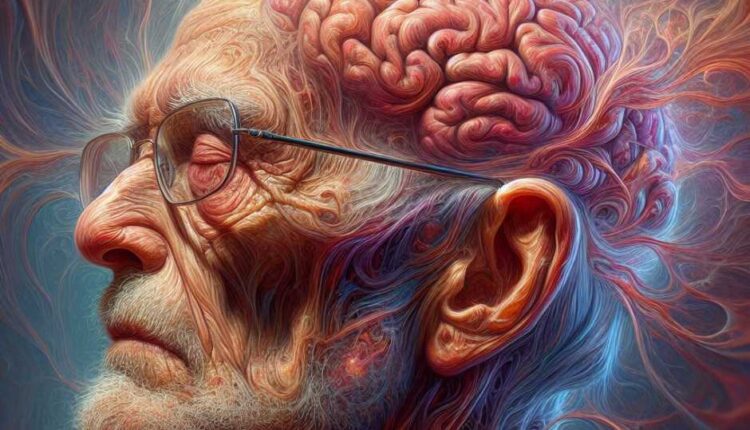Dementia with Lewy Bodies (DLB): A Comprehensive Guide
Dementia with Lewy bodies (DLB) is a progressive neurodegenerative disorder characterized by the accumulation of abnormal protein deposits, known as Lewy bodies, in the brain. These Lewy bodies disrupt brain cell function, leading to a range of cognitive, behavioral, and physical symptoms.
Symptoms and Clinical Presentation
- Fluctuating Cognition: DLB patients experience significant variations in cognitive abilities, including attention, alertness, and overall mental processing.
- Visual Hallucinations: Vivid visual hallucinations are a common feature of DLB, ranging from simple shapes to complex images.
- Parkinsonism: Many DLB patients develop symptoms similar to Parkinson’s disease, such as tremors, muscle stiffness, and balance issues.
- REM Sleep Behavior Disorder: Patients may act out their dreams during REM sleep, potentially causing injury or harm.
- Psychiatric Symptoms: DLB can also manifest as depression, anxiety, apathy, and mood swings.
Diagnosis and Management
Diagnosing DLB can be challenging due to symptom overlap with other dementias. A thorough medical evaluation, including a detailed history, physical examination, cognitive assessments, and brain imaging, is essential for an accurate diagnosis.
Management involves a comprehensive approach addressing both cognitive and physical symptoms:
- Medication: Cholinesterase inhibitors can alleviate cognitive symptoms, while caution is required in prescribing medications for parkinsonism symptoms to avoid exacerbating hallucinations.
- Supportive Care: Creating a safe and supportive environment, ensuring proper nutrition, and promoting regular physical activity is crucial.
- Holistic Approach: Cognitive stimulation, physical therapy, and social engagement can enhance quality of life, maintain independence, and slow symptom progression.
Advancements in DLB Research
Ongoing research focuses on improving diagnosis and treatment:
- Biomarker Research: Identifying specific proteins or genetic markers could aid in early detection and diagnosis.
- Neuroprotective Strategies: Novel therapies aim to slow DLB progression and preserve cognitive function.
- Non-Pharmacological Interventions: Complementary therapies, such as music and art therapy, are being explored for their potential benefits.
Triggers and Risk Factors of Dementia with Lewy Bodies
The exact cause of DLB is unknown, but several factors may contribute:
- Abnormal Protein Aggregation: Lewy bodies contain abnormal alpha-synuclein protein deposits. Genetic mutations and environmental factors may trigger this accumulation.
- Genetic Predisposition: Mutations in certain genes, such as SNCA, LRRK2, and GBA, increase DLB risk.
- Age and Gender: DLB is more common in individuals over 60, and men may be more susceptible than women.
- Parkinson‘s Disease Connection: DLB and Parkinson’s disease share similar features, suggesting a potential overlap in underlying mechanisms.
- Environmental Factors: Exposure to toxins or chemicals may contribute to Lewy body formation.
- Other Medical Conditions: Alzheimer‘s disease and vascular dementia may coexist with DLB in some cases.
Conclusion
Dementia with Lewy bodies is a complex and multifaceted disorder. Ongoing research aims to unravel its causes, improve diagnosis and treatment, and provide support for affected individuals and their families.
Related Topics
- Dementia and Lewy Body Disease: A Brief Guide for Beginners
- Tinnitus : Causes, Symptoms, and Treatment Options
- Cochlear Implants: A Transformative Journey To Hear Again
Sponsors – Health and Wellness Product Reviews
- Sugar Defender Reviews: The Importance of Blood Sugar Management
- Sumatra Slim Belly Tonic Reviews: Discover its Power for Healthy Weight Loss
- Puravive Reviews: A Detailed Analysis of Discovering the Essence
- ProDentim Reviews: Solution for Dental and Gum Problems
- Liv Pure Reviews: to Achieve Your Weight Loss Goals
- Java Burn Reviews: A Revolutionary Approach to Boosting Metabolism
- The Ultimate Weight Loss Solution – Ikaria Lean Belly Juice Reviews
- Gluconite Review – A Comprehensive Analysis of Safety and Effectiveness
- Cortexi Reviews – Unveiling the Power of the Ultimate Nootropic Formula
- Cardio FLEX Reviews: Unveiling the Truth about Cardiovascular Health Support
- Quietum Plus Reviews: Unlocking the Secrets to Optimal Ear Health and Clear Hearing


[…] Dementia with Lewy Bodies (DLB): A Comprehensive Guide […]
[…] Dementia with Lewy Bodies (DLB): A Comprehensive Guide […]